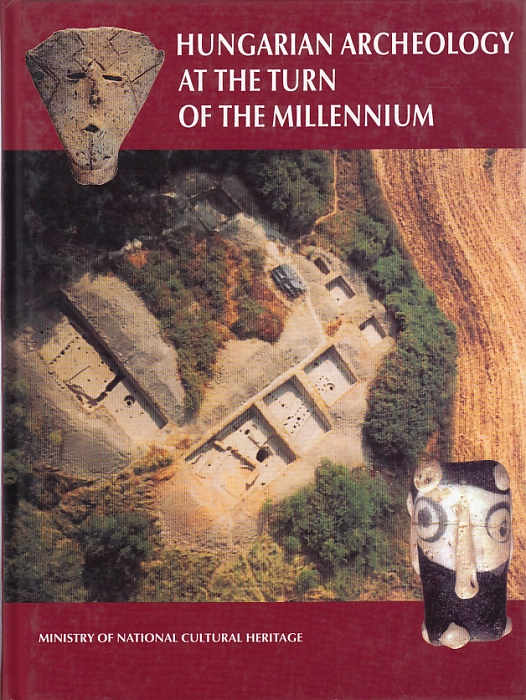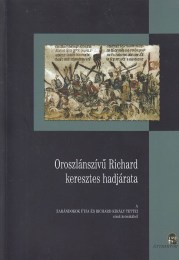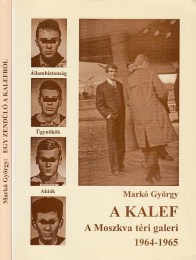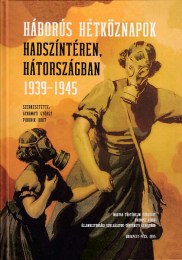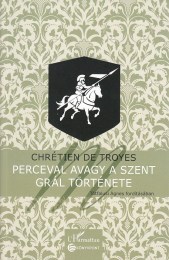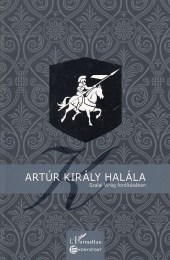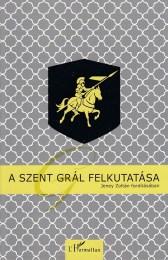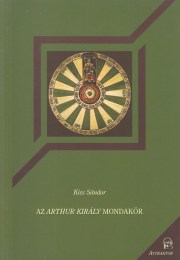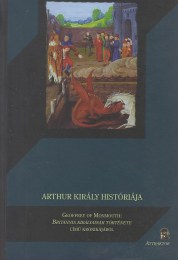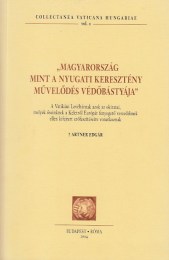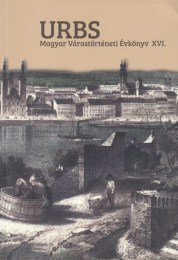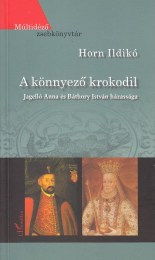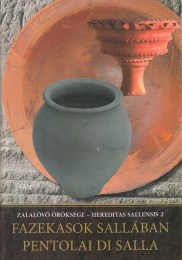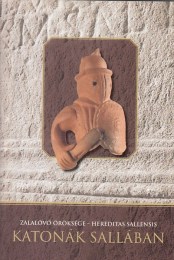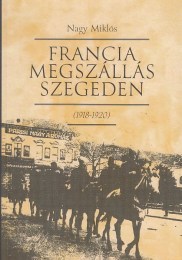Nincs termék a kosárban!
Hungarian Archeology at the Turn of the Millennium
Table of Contents
Commendation
Editors' foreword
Lectori Salutem
I. ARCHAEOLOGICAL RESEARCH IN HUNGARY Edited by MIHÁLY NAGY
The history of archaeological fieldwork in Hungary
Underwater archaeology
The emergence of underwater archaeology in Hungary
The conditions of underwater archaeology in Hungary
Underwater finds, underwater sites
Underwater excavations in Hungary
Opinions and counter-opinions
The future of underwater research
Aerial archaeology in Hungary
Urban archaeology: a special field of heritage protection
The natúré of urban archaeology
Urban excavations and urban planning
The protection of the archaeological heritage in Hungary
Beginnings
The importance of the foundation of the Hungárián National Museum
The role of the Hungárián Academy of Sciences
Legislation
The protection of the immovable heritage at present
International practice
II. MÁN AND HIS ENVIRONMENT Edited by LÁSZLÓ BARTOSIEWICZ & ERZSÉBET JEREM
Environmental archaeology: the birth of a new discipline
Methods of environmental archaeology
Environmental archaeology in Hungary
The future of environmental archaeology - reconstructing and protecting the landscape
Dating methods
Relatíve chronology
Radiocarbon dating
Other dating methods
Dendrochronology and ancient forest cover
The principles of dating
Dating in practice
Archaeological examples
Forestry: a historical perspective
Future research directions
Palaeoenvironmetal history of Hungary
The mosaic patterning of the environment
Reindeer hunters of the laté Ice Age
Mesolithic hunter-gatherers
Early food producing communities in the Neolithic
Consequences of the mosaic patterning of the environment
Hunted animals
The archaeological significance of hunting
Holocene mammals in Hungary
Hunted animals
Hunting booty as archaeological finds
Hunting in the post-medieval period
The archaeology of domestic animals
Why study the remains of domestic animals?
The first domestic animals
The beginnings of animal keeping in the Carpathian Basin
What can we learn from animal bones?
Equestrian burials
Boné working
Reconstructing nutritional history
Animal breeds
Remains of an exotic animal
New perspectives in the archaeological research of domestic animals
The archaeology of cultivated plants
The humán population
Historical anthropology
Burials - Excavations
How does historical anthropology contribute to historical studies?
Historical demography
Health and disease in the pást
Modifications caused by cultural tradition
What did they look like? - The reconstruction of facial features
Anthropological collections
Modern Age mummies
Exhumation and identification
Perspectives in historical anthropology
Appendix: the mammals of Hungary
III. THE PALAEOLITHIC AND MESOLITHIC Edited by KATALIN T. BlRÓ
Introduction
Vértesszőlős: the first people in Hungary
The evolution and culture of modern mán
The Middle Palaeolithic
The transition from the Middle to the Upper Palaeolithic
The early Upper Palaeolithic
Laté glacial hunters
The Mesolithic: towards a production economy
IV. THE NEOLITHIC Edited by Katalin T. Bíró
Introduction: the beginnings of a production economy in Hungary
The history of the Neolithic
The Neolithic in the Southern part of the Great Hungárián Piain
The Neolithic in the northern part of the Great Hungárián Piain and the Northern Mountain Rangé
The Neolithic in Transdanubia up to the appearancc of the Lengyel culture
The Laté Neolithic in Transdanubia.
Neolithic settlements
Fiizesabony-Gubakút: a Neolithic settlement in the Great Hungárián Piain
Mosonszentmiklós-Egyéni földek: a Neolithic viliágé in Transdanubia
Hódmezővásárhely-Gorzsa: a Laté Neolithic settlement in the Tisza region
Burial rites of the Neolithic
Neolithic burials in the Tisza region
Neolithic burial customs and burial rites in Transdanubia
Neolithic beliefs
Raw materials, mining and trade
V. THE COPPER AGE Edited By ZSUZSNNA M. VIRÁG
History of the Copper Age
Settlements
Early metallurgy in the Carpathian Basin Copper Age religion and beliefs
VI. THE BRONZE AGE Edited by ERZSÉBET JEREM
Changes in the 3rd millennium B.C.: the dawn of a new period
The Early Bronze Age
Teli cultures of the Early and Middle Bronze Age
Tiszaug-Kéménytető: a Bronze Age settlement in the Tiszazug
Burials around Nagyrév-Zsidóhalom
The expansion of the Hatvan culture
Jászdózsa-Kápolnahalom: a teli settlement in the Great Hungárián Piain
Cemeteries of the Hatvan culture
Central European economies: agriculturalists in Transdanubia
Potters in Transdanubia
Burials of the Encrusted Pottery culture
Fortified centres along the Danube
Dunaújváros-Dunadűlő: burials of the Vatya culture
The florescence of the Middle Bronze Age in the Tisza region: the Füzesabony culture
Cemeteries of the Füzesabony culture
The Middle Bronze Age population of the Berettyő-Körös region: the Gyulavarsánd culture
Túrkeve-Terehalom: a teli settlement in the Berettyó valley
Teli settlements in the Maros region
The Koszider period
The advent of a new period: the Laté Bronze Age in the Carpathian Basin
The Tumulus culture: invaders from the west
The expanding world: masters of bronzeworking in the Carpathian Basin
Bronze Age metallurgy
The emergence of Bronze Age metallurgy
Bronzeworking in the Middle Bronze Age
Gold metallurgy
The bronze industry of the Laté Bronze Age
Laté Bronze Age gold metallurgy
VII. THE IRON AGE Edited by ERZSÉBET JEREM
The beginning of the Iron Age: the pre-Scythians
The Middle Iron Age: Scythians in the Tisza region
Burials
Settlement and economy
Horse harness and weapons
Animál style art
Pottery
The Early Iron Age in Transdanubia: the Hallstatt culture
New research results
Hillforts and fortified settlements
Burial mounds and religious beliefs
Inurned burials
Weapons, horse harness, costume: the finds from male burials
Female costume and jewellery
Masterpieces of the potter’s craft
Rural settlements
Crafts and industry
The Laté Iron Age: the Celts of the La Téne period
New advances in the research of the Celts
History of the Celts
Celtic cemeteries and burial customs
Grave goods and costume
Settlement history
Masterpieces of Celtic craftsmanship
Religion
The Celtic site at Ménfőcsanak
VIII. THE ROMÁN PERIOD Edited by ZSOLT VlSY
Historical outline of the Román period
The natúré of research
Pannónia
Román administration in Pannónia
The change in lifeways
Pannonia’s role in the Román Empire
Pannónia in Antiquity
Changes in the 4th century
Questions of survival
The bordér defence of Pannónia
Fortifications
Watchtowers
The limes road
Laté Román forts in Pannónia
Román roads in Transdanubia
The towns of Pannónia
The early dcvclopment of Pannonian towns
Religious life in Pannonian towns
Savaria
Scarbantia
Aquincum: the civilian town
Brigetio
Sopianae
Aqueducts and public Utilities
Licence, design, execution
Operádon and maintenance
Régiónál establishments linked to water
Recent research results
The subsequent fate of Román aqueducts
Rural settlements in Pannónia
Villás
Román villás north of Laké Balaton
Rural settlements in Pannónia
Crafts and industry
Quarries
Brick kilns
Lime kilns
Potteiy kilns
Glass
Ironworking
Bronzeworking.
Cult centres in Pannónia
Burials
Burial rites in the Román period
Burials and settlement layout
Funerary memorials and monuments
Román period tumuli in Transdanubia
IX. THE BARBARICUM IN THE ROMÁN PERIOD Edited by Andrea Vaday
Historical overview
The peoples of the Barbaricum during the Román period
The Sarmatians
The Celts
The Dacians
The Quadi
The Vandals
The archaeology of the Sarmatian territories
Burials
Settlements
The archaeology of the northern and northeastern fringes of the Sarmatian settlement territory
Research perspectives
X. THE MIGRATION PERIOD Edited by TIVADAR VlDA
Cross-roads of peoples and cultures
The Huns
History of the Huns
History of research
Burials and society
The Sarmatians in the Hun period
The Romanized population in the 5th-6th centuries
Germans and Alans in Transdanubia in the 5th century
The Ostrogoths
The Suebians
Germanic peoples in the Great Hungárián Piain during the 5th century
The Gepids
History
History of research
Cemeteries and society
Settlements
The Langobards
History
History of research
Cemeteries and society
Settlements and subsistence
The early and middle Avar period
History
History of research
Cemeteries and society
The middle Avar period
Crafts, costume and implements
Settlements and subsistence
The Laté Avar period
History
History of research
Cemeteries and society
Crafts
Settlements
The Carolingian period
History
History of research
Cemeteries
Settlements
Mosaburg/Za1avár
XI. THE CONQUEST PERIOD Edited by LÁSZLÓ RÉVÉSZ
The archaeological research of the Conquest period
10th—11 th century settlements
Earthen forts
Crafts
The art and religion of the ancient Hungarians
The cemeteries of the Conquest period
XII. THE MIDDLE AGES AND THE POST-MEDIEVAL PERIOD Edited by József Laszlovszky
Medieval archaeology in Hungary
Medieval royal centres
Székesfehérvár
Esztergom
13th century royal castles
The royal palace of Buda
The Gothic sculptures of Buda Castle
Buda Palace at the end of the Middle Ages
Visegrád
The re-creation of the Renaissance in Visegrád
The archaeological investigation of medieval urban structure
Medieval urban parish churches and hospitals
Urban archaeology and written sources
Medieval markét towns
Cathedrals, monasteries and churches: the archaeology of ecclesiastic monuments
Medieval monasteries
The Franciscan friary in Visegrád
Castles, forts and stockades - medieval and Ottoman period military architecture
Minor castles
Royal castles in the later Middle Ages
Military architecture in Hungary during the Ottoman period
Palisaded forts in Hungary during the Ottoman period
Medieval villages and their fields
The structure of Arpádian Age rural settlements
A ‘buried landscape’: Arpádian Age settlement history in the Danube-Tisza interfluve
Viliágé parish churches
The reconstruction of a medieval dwelling
Ethnic groups and cultures in medieval Hungary
Eastern ethnic groups in medieval Hungary
The archaeological legacy of the Pecheneg and Cumanian aristocracy
From aul to viliágé: Cumanian and Jazygian settlements
Cumanian and Jazygian cemeteries
Ethnic groups in the towns of medieval Hungary
Jews and urbanization
Medieval material culture - medieval archaeology
Stoves with a story and artistic cups: laté medieval pottery
The stove from the éra of King Louis the Great in Visegrád
Gothic stoves and their influence on folk stoves
The Matthias period tiled stove from Visegrád Palace
“The more often a pitcher goes to the well
Ottoman period archaeology - post-medieval archaeology
The archaeology of the Ottoman period
Turkish material culture
The florescence and decline of villages
Hungárián material culture in the Ottoman period
An enigmatic settlement type: hamlets and farmsteads
XIII. ARCHAEOLOGICAL INSTITUTIONS Edited by KATALIN VOLLÁK
Academicians in archaeology
Archaeological collections and museums
From King Matthias’s collection of antiquities to the Hungárián National Museum
and specialized collections
The changing tasks of archaeological museums from their emergence in the laté 19th century until today
Excavations: from treasure hunting to motorway archaeology
Archaeological education and research at the universities
Institute of Archaeological Sciences, Eötvös Loránd University, Budapest
Department of Archaeology, József Attila University, Szeged
Department of Ancient History and Archaeology, Janus Pannonius University, Pécs
Department of Prehistory and Ancient History, Miskolc University
Archaeology and the Hungárián Academy of Sciences
Research policy and publications
Academic classification
Membership in the Academy
Public body
The Archaeological Institute of the Hungárián Academy of Sciences
Listed archaeological sites - volunteers and amateurs in archaeology
Registration and databases
The conservation and exhibition of archaeological remains: archaeological parks
and experimental archaeology
Hungárián archaeological sites on the World Heritage List
The integration of historic monument preservation intő heritage projects
Index of sites
Select bibliography
List of illustrations
Chronological charts
Oldalszám: 496
Kiadási év: 2003

